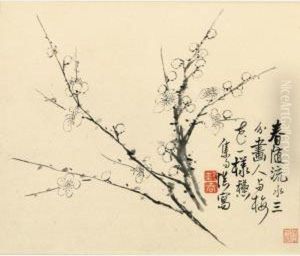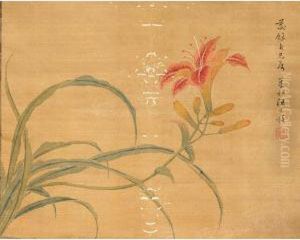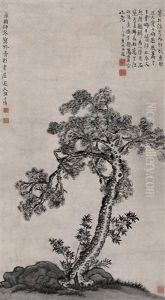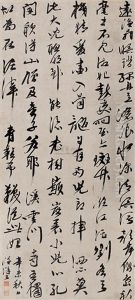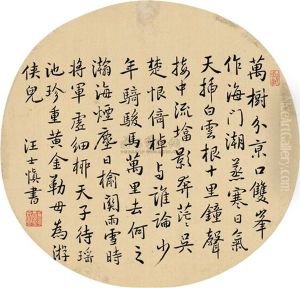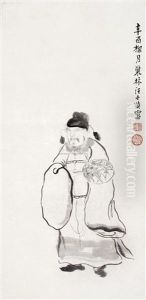Wang Shishen Paintings
Wang Shishen was a notable Chinese painter during the Qing Dynasty, born in 1686 and passing in 1759. He was a native of Jiading, which is now part of Shanghai. Wang's life and career unfolded during a period of significant social and political changes in China, which were reflected in the arts and culture of the time. Despite the challenges of his era, Wang Shishen emerged as a distinguished artist, celebrated for his contributions to Chinese ink painting, particularly in the genre of bird-and-flower painting.
Wang Shishen was not just an artist; he was also a scholar, a poet, and a connoisseur of art, embodying the ideal of the literati or scholar-officials who dominated Chinese cultural life for centuries. His paintings often exhibit a combination of scholarly knowledge and artistic skill, featuring meticulously detailed birds, flowers, and landscapes that serve as metaphors for moral virtues and personal aspirations. His works are characterized by their elegant brushwork and refined aesthetics, which were influenced by the scholarly traditions of the Ming and early Qing dynasties.
Throughout his career, Wang Shishen was known for his independence and eccentricity, traits that were both admired and criticized by his contemporaries. He often chose to live a reclusive life away from the political and social turmoil of his times, dedicating himself to his art and studies. Despite his reclusiveness, he was connected with the leading intellectuals and artists of the period, engaging in artistic exchanges that enriched his work.
Wang Shishen's legacy is significant in the history of Chinese art. His paintings are held in high esteem, not only for their aesthetic qualities but also for their embodiment of the literati ideals of moral integrity and intellectual pursuit. His works are preserved in various museums and collections around the world, where they continue to be studied and appreciated for their contribution to the rich tapestry of Chinese cultural heritage.
